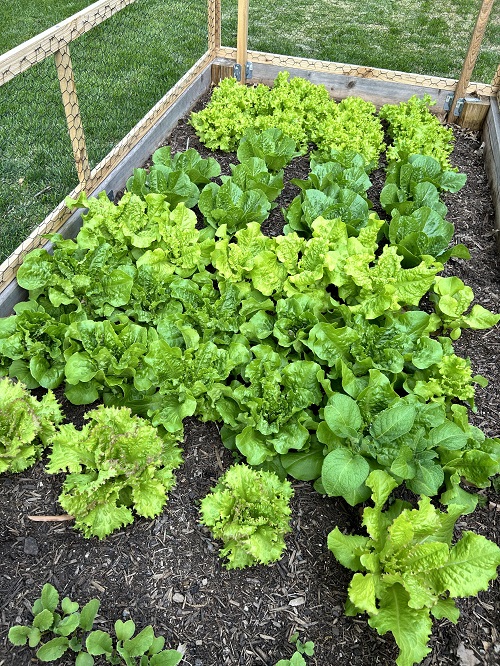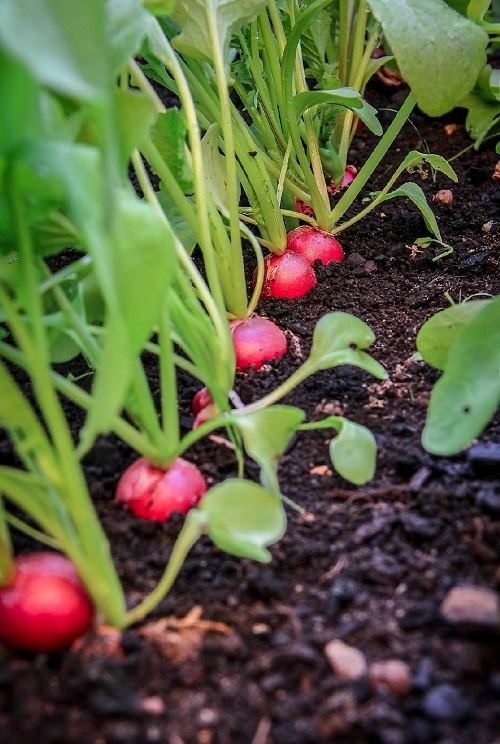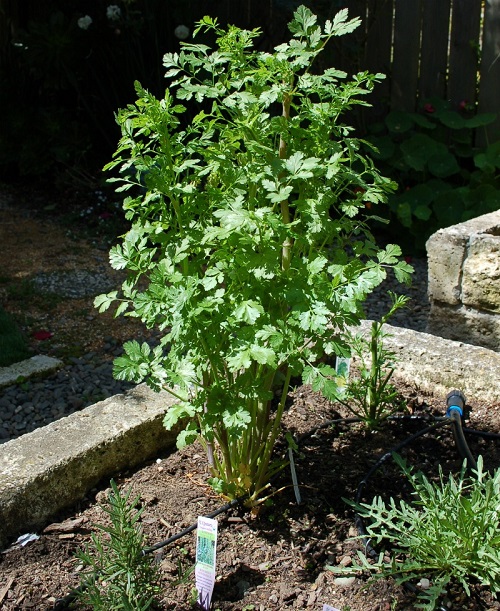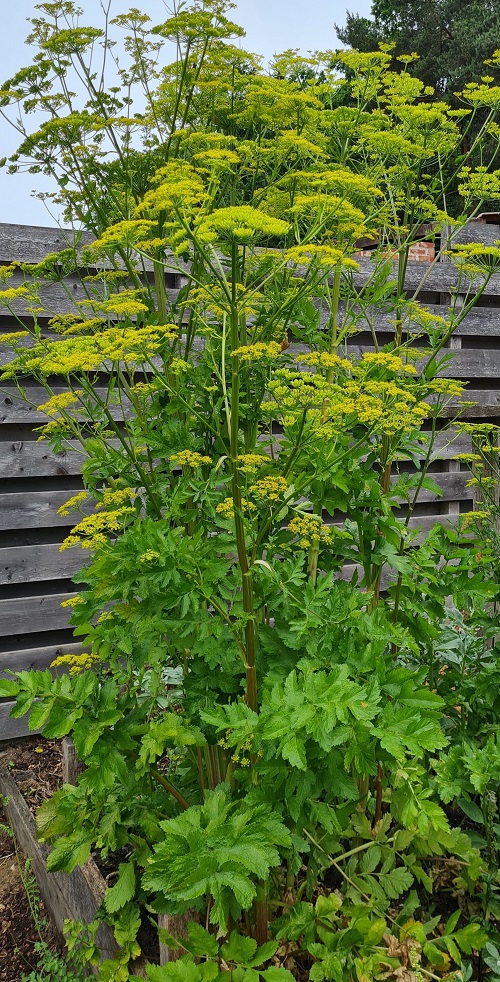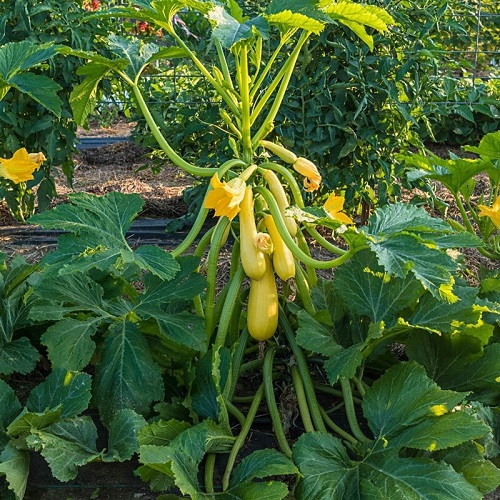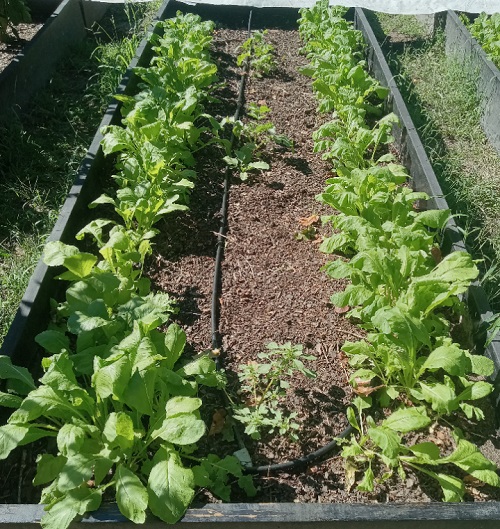Want abundant harvests of garden-fresh, homegrown veggies the lazy way? Check out these Self-Seeding Vegetables that Grow on Their Own!
Have you ever abandoned a patch of leafy greens to neglect, only to find them prolifically sprouting nearby? Several homegrown edibles spread quickly without effort. Our pick of self-seeding vegetables that grow on their own is curated specially for the lazy or probably wisest gardeners!
Self-Seeding Vegetables that Grow on Their Own
Before we dive in, note that once an herb or veggie bolts or flowers, it may not be as palatable. This often (but not always) signals the plant is nearing the end of its growth phase. But don’t pull it out just yet—this is also a sign that the plant is ready to reseed.
And it can often pop up again the next season with little intervention. And with a bit of help from Mama Earth, you’ll soon have a self-sustaining veggie patch that grows on its own!
1. Arugula
Botanical Name: Eruca vesucaria
USDA Zones: 2-11
This delicious peppery and slightly bitter leafy green is a must-have self-seeding veggie for your salad garden. If you grow it once, you’ll have an unlimited supply again and again and again! Arugula flowers and leaves are delicate and tend to flop in excessive wind or rain.
Just make sure you have ample space for it to grow. Plant this cool-season annual in spring or fall in a sunny spot with well-drained soil. It’s a fast grower, so it’ll bolt quickly and go to seed. You can pair it with these companions.
Botanical Name: Lactuca sativa
USDA Zones: 2-11
This juicy, sweet, leafy veggie can taste bitter if left to bolt and set seeds. So, we suggest harvesting a few leaves early on to relish their classic flavor and leaving a few intact, especially if you have no time for post-harvest care.
And by spring, you will find ready-made lettuce seedlings in your garden without having to do anything! Ensure the plant gets 6-8 hours of sunshine daily and well-drained soil rich in organic matter. Here’s how you grow lettuce in containers.
3. Radish
Botanical Name: Raphanus sativus
USDA Zones: 2-11
Radish seeds germinate quickly, making them perfect for beginners. Since these prolific self-seeders spread easily, your existing plants will also give you good produce the following year. Plus, they only need 30 days to be ready for harvest after the seeds are sown!
Plant radishes alongside broccoli, Brussels sprouts, and cauliflower, as they don’t need much space. Both winter and summer varieties are available, so whip up recipes with radishes year-round!
4. Tomato
Botanical Name: Solanum lycopersicum
USDA Zones: 2-12
While tomatoes don’t have the reputation of being the easiest to grow without diseases, with the right care, these self-pollinating fruits can reward you with an abundant harvest. They need space to grow, produce, and drop fruits on the ground.
The general thumb rule when it comes to tomatoes is that the more sun, the more tomatoes, provided the soil quality is good. Just thin out any clumps of tomato plants, leaving the most potent ones behind, and follow our tomato growing guide!
5. Cilantro
Botanical Name: Coriandrum sativum
USDA Zones: 2-11
Though a herb rather than a vegetable, if cilantro is an ingredient you often use in your cooking, you must leave it to flower and self-seed. Plant your initial crop in the spring or fall, ensuring bright sunlight and well-drained soil with a pH of 6.2 to 6.8.
In the warmer months, you will have more cilantro seedlings than you can handle! Remember to shade the plants during the hottest part of the day. The best part is that you can even grow it indoors.
6. Carrot
Botanical Name: Daucus carota subsp. sativus
USDA Zones: 2-11
Biennials like carrots will grow leaves and roots in the first year of planting. Leave them alone without harvesting; they will flower in the second year—a cherished source of nectar for pollinators. Note that self-seeding carrots take longer to spread than most veggies.
Plant carrots in a sunny spot with fertile, well-drained soil. Remember that carrots will grow slowly if the soil is shallow, stony, or heavy clay.
7. Parsnip
Botanical Name: Pastinaca sativa
USDA Zones: 4-9
Parsnips are notorious for being slow in germination. However, leaving them alone in good quality, well-draining soil and mulching occasionally will give you beautiful parsnip harvests every season!
Even parsnip seeds are edible and make a lovely seasoning that tastes like dill. So, if you have had no luck with dill, let your parsnips self-seed and harvest these instead!
8. Kale
Botanical Name: Brassica oleracea var. sabellica
USDA Zones: 7-10
Kale is a cool-season crop that requires overwintering. This vegetable is best for growing in warmer areas, as it can produce harvests throughout winter. Once the weather warms up, you will get self-seeded kale. Try these varieties if you’re growing kale.
Caterpillars are generally big fans of dining on kale, so you must protect your plants against these.
9. Parsley
Botanical Name: Petroselinum crispum
USDA Zones: 5-11
Parsley is another self-seeding herb that you need to plant once, and you can harvest forever! Not only does parsley attract beneficial pollinators as it flowers, but it can also work as a trap crop for aphids.
Sometimes, you will have more than you can handle! Mow them off your vegetable garden to keep their population tamed. Here are the best varieties.
10. Potato
Botanical Name: Solanum tuberosum
USDA Zones: 2-11
When it comes to growing potatoes, you can’t stop once you start—unless you harvest every little potato growing in your vegetable garden. The easiest way to get next year’s potato crop early is to forget all about them.
Transplant them in early spring for more space. This versatile and omnipresent veggie is susceptible to blight. Check for symptoms regularly, and allow only the healthy ones to self-seed.
11. Spinach
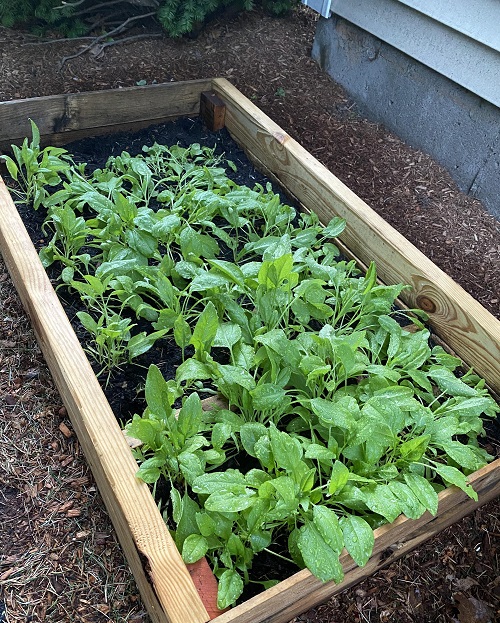
Botanical Name: Spinacia oleracea
USDA Zones: 2-11
Plant a bed of this tasty and nutritious green early in spring and harvest before they set seed for a tasty harvest in late summer or fall. As your spinach sets flower, your garden will become a lovely hangout for many beneficial pollinators as you wait for next year’s yield.
A bit of watering, full sun to partial shade, and moderate fertilizers will give you baby greens aplenty. Here’s how to make it sweeter and not bitter.
12. Squash
Botanical Name: Cucurbita pepo
USDA Zones: 3-11
One of the easiest veggies for self-seeding is squash. If you leave a compost pile with squash remains, you will be privy to squash’s fantastic ability to cross-pollinate and spread. To derive hybrid crosses of this veggie, plant different squash varieties nearby.
Sometimes, these hybrid varieties can get powdery mildew. If this is the case, pull out and discard the plants before the fruits set
13. Swiss Chard
Botanical Name: Beta vulgaris L. var. cicla
USDA Zones: 2-10
This resilient leafy green can overwinter without much protection in mild winters and keep up its produce throughout the season. It sets seed in the following summer. Use floating row covers to protect the seedlings if your winters are harsh.
Typically, when there’s frost, your Swiss chard will likely not self-seed out in the garden. However, you can grow them in pots and bring them in during extremities.
14. Mustard Greens
Botanical Name: Brassica juncea
USDA Zones: 2-11
The cool-season spicy mustard green is one of the best additions to your vegetable garden. While you can harvest the leaves in winter, letting these go to seed will give you more of it the following season.
Insects like slugs love this leafy vegetable. Here’s how to protect your plants against them.
Self-seeding vegetables are perfect for self-sufficient kitchen gardens. While we’re on the topic of kitchen gardening, don’t forget to check out how to grow a picture-perfect pizza garden!



